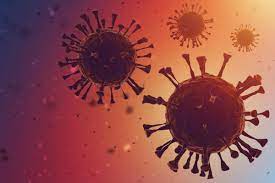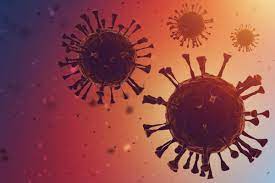
In recent week, a number of studies have emerged on Covid-19 – especially surrounding the Omicron variant. And some of these studies are also not peer reviewed yet.
Studies have shown that the Omicron variant multiplies faster in airways but at a slower rate in human lungs.
Last earlier this week, researchers said claimed to have found significant variations in how efficiently the Omicron variant and other coronavirus strains reproduce which could help forecast Omicron's impact.
The studies claimed that Omicron grows 70 times faster in tissues that line airway passages compared to the previous Delta variant, which may facilitate person-to-person dissemination. However, Omicron replicates 10 times slower in lung tissues than the original coronavirus, which may lead to less severe sickness.
The research team has not produced a formal report of the findings, which is currently undergoing peer assessment for publication.
Dr. Michael Chan Chi-wai, leader of the study said in a news release issued by Hong Kong University, that "it is important to note that the severity of disease in humans is not determined only by virus replication" but also according to the immune response to the infection of every individual, which sometimes can lead to life-threatening inflammation.
Chan added, "By infecting many more people, a very infectious virus may cause more severe disease and death even though the virus itself may be less pathogenic. Therefore, taken together with our recent studies showing that the Omicron variant can partially escape immunity from vaccines and past infection, the overall threat from Omicron variant is likely to be very significant."
Another study claimed to have found that the Omicron variant is able to cling on to cells more tightly and is able to remain unaffected by some antibodies.
According to researchers, designing Omicron neutralizing antibodies could be helped by studies forecasting a structural model about the manner in which the variant attaches to cells and antibodies, highlighting the behaviour of the virus variant.
They studied molecular interactions that occur when the spike grips onto a cell-surface protein called ACE2, the virus's gateway into the cell, using computer models of the spike protein on Omicron's surface.
According to Joseph Lubin of Rutgers University in New Jersey, the original virus had a handshake with ACE2, while Omicron's grip "looks more like a couple holding hands with their fingers interwoven." Lubin said that the "molecular anatomy" of the grip could help explain how Omicron's alterations work together to help it infect cells.
The researchers also created a model of the spike with various types of antibodies attempting to target it. "Like a football team's defence may tackle a ball carrier," Lubin explained, the antibodies attack from multiple angles, with one person grabbing from behind and another from the front. Some antibodies "appear to be brushed off," while others "appear to be effective." Booster vaccines increase antibody levels, resulting in "more defenders," which could help compensate for "a weaker grip of an individual antibody," according to Lubin.
Another study concluded that 40 per cent of infected persons may be spreading the virus unknowingly.
According to a study published online Tuesday in the journal JAMA Network Open, infected people who exhibit no symptoms may be contributing significantly to the transmission of SARS-CoV-2, the virus that causes COVID-19, as they account for 40.5 per cent of confirmed infections worldwide.
The researchers combined data from 77 previous studies involving a total of 19,884 people who had been diagnosed with SARS-CoV-2 infection. They discovered that roughly 40 per cent of infected people in the general community, as well as 54 per cent of infected pregnant women, 53 per cent of infected air or cruise tourists, 48 per cent of infected nursing home residents or employees, and 30 per cent of infected healthcare professionals or hospitalised patients, were asymptomatic.
A total of 46 per cent of infections were asymptomatic in North America, 44 per cent in Europe, and 28 per cent in Asia.
"The high percentage of asymptomatic infections highlights the potential transmission risk of asymptomatic infections in communities," wrote Min Liu and colleagues at Peking University in China. Officials should screen for asymptomatic infections, and those who are identified "should be under management similar to that for confirmed infections, including isolating and contact tracing."
(Source:www.reuters.com)
Studies have shown that the Omicron variant multiplies faster in airways but at a slower rate in human lungs.
Last earlier this week, researchers said claimed to have found significant variations in how efficiently the Omicron variant and other coronavirus strains reproduce which could help forecast Omicron's impact.
The studies claimed that Omicron grows 70 times faster in tissues that line airway passages compared to the previous Delta variant, which may facilitate person-to-person dissemination. However, Omicron replicates 10 times slower in lung tissues than the original coronavirus, which may lead to less severe sickness.
The research team has not produced a formal report of the findings, which is currently undergoing peer assessment for publication.
Dr. Michael Chan Chi-wai, leader of the study said in a news release issued by Hong Kong University, that "it is important to note that the severity of disease in humans is not determined only by virus replication" but also according to the immune response to the infection of every individual, which sometimes can lead to life-threatening inflammation.
Chan added, "By infecting many more people, a very infectious virus may cause more severe disease and death even though the virus itself may be less pathogenic. Therefore, taken together with our recent studies showing that the Omicron variant can partially escape immunity from vaccines and past infection, the overall threat from Omicron variant is likely to be very significant."
Another study claimed to have found that the Omicron variant is able to cling on to cells more tightly and is able to remain unaffected by some antibodies.
According to researchers, designing Omicron neutralizing antibodies could be helped by studies forecasting a structural model about the manner in which the variant attaches to cells and antibodies, highlighting the behaviour of the virus variant.
They studied molecular interactions that occur when the spike grips onto a cell-surface protein called ACE2, the virus's gateway into the cell, using computer models of the spike protein on Omicron's surface.
According to Joseph Lubin of Rutgers University in New Jersey, the original virus had a handshake with ACE2, while Omicron's grip "looks more like a couple holding hands with their fingers interwoven." Lubin said that the "molecular anatomy" of the grip could help explain how Omicron's alterations work together to help it infect cells.
The researchers also created a model of the spike with various types of antibodies attempting to target it. "Like a football team's defence may tackle a ball carrier," Lubin explained, the antibodies attack from multiple angles, with one person grabbing from behind and another from the front. Some antibodies "appear to be brushed off," while others "appear to be effective." Booster vaccines increase antibody levels, resulting in "more defenders," which could help compensate for "a weaker grip of an individual antibody," according to Lubin.
Another study concluded that 40 per cent of infected persons may be spreading the virus unknowingly.
According to a study published online Tuesday in the journal JAMA Network Open, infected people who exhibit no symptoms may be contributing significantly to the transmission of SARS-CoV-2, the virus that causes COVID-19, as they account for 40.5 per cent of confirmed infections worldwide.
The researchers combined data from 77 previous studies involving a total of 19,884 people who had been diagnosed with SARS-CoV-2 infection. They discovered that roughly 40 per cent of infected people in the general community, as well as 54 per cent of infected pregnant women, 53 per cent of infected air or cruise tourists, 48 per cent of infected nursing home residents or employees, and 30 per cent of infected healthcare professionals or hospitalised patients, were asymptomatic.
A total of 46 per cent of infections were asymptomatic in North America, 44 per cent in Europe, and 28 per cent in Asia.
"The high percentage of asymptomatic infections highlights the potential transmission risk of asymptomatic infections in communities," wrote Min Liu and colleagues at Peking University in China. Officials should screen for asymptomatic infections, and those who are identified "should be under management similar to that for confirmed infections, including isolating and contact tracing."
(Source:www.reuters.com)














